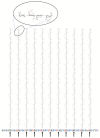Walking on water: revisiting the role of water in articular cartilage biomechanics in relation to tissue engineering and regenerative medicine
- PMID: 35919975
- PMCID: PMC9346369
- DOI: 10.1098/rsif.2022.0364
Walking on water: revisiting the role of water in articular cartilage biomechanics in relation to tissue engineering and regenerative medicine
Abstract
The importance, and the difficulty, of generating biosynthetic articular cartilage is widely recognized. Problems arise from obtaining sufficient stiffness, toughness and longevity in the material and integration of new material into existing cartilage and bone. Much work has been done on chondrocytes and tissue macromolecular components while water, which comprises the bulk of the tissue, is largely seen as a passive component; the 'solid matrix' is believed to be the main load-bearing element most of the time. Water is commonly seen as an inert filler whose restricted flow through the tissue is believed to be sufficient to generate the properties measured. We propose that this model should be turned on its head. Water comprises 70-80% of the matrix and has a bulk modulus considerably greater than that of cartilage. We suggest that the macromolecular components structure the water to support the loads applied. Here, we shall examine the structure and organization of the main macromolecules, collagen, aggrecan and hyaluronan, and explore how water interacts with their polyelectrolyte nature. This may inform the biosynthetic process by identifying starting points to enable developing tissue properties to guide the cells into producing the appropriate macromolecular composition and structure.
Keywords: aggrecan; cartilage; collagen; regenerative medicine; tissue engineering; water.
Figures



Similar articles
-
Reproducing the Biomechanical Environment of the Chondrocyte for Cartilage Tissue Engineering.Tissue Eng Part B Rev. 2022 Apr;28(2):405-420. doi: 10.1089/ten.TEB.2020.0373. Epub 2021 Jun 1. Tissue Eng Part B Rev. 2022. PMID: 33726527 Review.
-
Cartilage biomechanics: A key factor for osteoarthritis regenerative medicine.Biochim Biophys Acta Mol Basis Dis. 2019 Jun 1;1865(6):1067-1075. doi: 10.1016/j.bbadis.2019.03.011. Epub 2019 Mar 22. Biochim Biophys Acta Mol Basis Dis. 2019. PMID: 30910703 Review.
-
[The structure, physiology, and biomechanics of articular cartilage: injury and repair].Acta Orthop Traumatol Turc. 2007;41 Suppl 2:1-5. Acta Orthop Traumatol Turc. 2007. PMID: 18180577 Review. Turkish.
-
Passaged Articular Chondrocytes From the Superficial Zone and Deep Zone Can Regain Zone-Specific Properties After Redifferentiation.Am J Sports Med. 2024 Mar;52(4):1075-1087. doi: 10.1177/03635465241230031. Epub 2024 Feb 28. Am J Sports Med. 2024. PMID: 38419462 Free PMC article.
-
Articular cartilage: tissue design and chondrocyte-matrix interactions.Instr Course Lect. 1998;47:477-86. Instr Course Lect. 1998. PMID: 9571449 Review.
Cited by
-
A genetic algorithm optimization framework for the characterization of hyper-viscoelastic materials: application to human articular cartilage.R Soc Open Sci. 2024 Jun 26;11(6):240383. doi: 10.1098/rsos.240383. eCollection 2024 Jun. R Soc Open Sci. 2024. PMID: 39100168 Free PMC article.
-
BMP9 induces postnatal zonal stratification of immature articular cartilage through reconfiguration of the existing collagen framework.Front Cell Dev Biol. 2025 Jan 28;12:1511908. doi: 10.3389/fcell.2024.1511908. eCollection 2024. Front Cell Dev Biol. 2025. PMID: 39935787 Free PMC article.
-
β1-Integrin-Mediated Uptake of Chondrocyte Extracellular Vesicles Regulates Chondrocyte Homeostasis.Int J Mol Sci. 2024 Apr 26;25(9):4756. doi: 10.3390/ijms25094756. Int J Mol Sci. 2024. PMID: 38731975 Free PMC article.
-
Rethinking Osteoarthritis Management: Synergistic Effects of Chronoexercise, Circadian Rhythm, and Chondroprotective Agents.Biomedicines. 2025 Mar 1;13(3):598. doi: 10.3390/biomedicines13030598. Biomedicines. 2025. PMID: 40149577 Free PMC article.
-
Development of bioactive solid-foam scaffolds from decellularized cartilage with chondrogenic and osteogenic properties.Mater Today Bio. 2024 Sep 3;28:101228. doi: 10.1016/j.mtbio.2024.101228. eCollection 2024 Oct. Mater Today Bio. 2024. PMID: 39296356 Free PMC article.
References
-
- Mitchell HH, Hamilton TS, Steggerda FR, Bean HW. 1945. The chemical composition of the adult human body and its bearing on the biochemistry of growth. J. Biol. Chem. 158, 625-637. (10.1016/S0021-9258(19)51339-4) - DOI
-
- USDA 2022. FoodData Central. USDA National Nutrient database for Standard Reference Release 28. See https://fdc.nal.usda.gov/index.html.
Publication types
MeSH terms
Substances
Grants and funding
LinkOut - more resources
Full Text Sources

